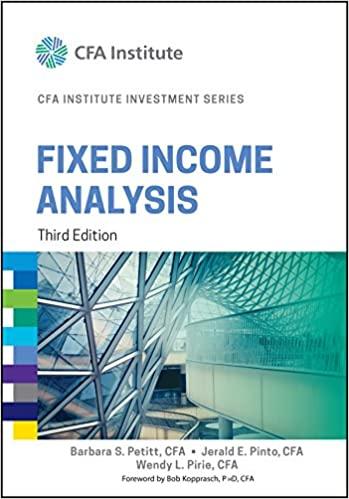Th e following passages are from Leland Crabbe Corporate Spread Curve Strategies, Chapter 28 in Frank J.
Question:
Th e following passages are from Leland Crabbe “Corporate Spread Curve Strategies,”
Chapter 28 in Frank J. Fabozzi (ed.), Th e Handbook of CorporateDebt Instruments (New Hope, PA: Frank J. Fabozzi Associates, 1998).
In the corporate bond market, spread curves often diff er considerably across issuers . . .
Most fi xed income investors understand the relation between the term structure of interest rates and implied forward rates. But some investors overlook the fact that a similar relation holds between the term structure of corporate spreads and forward corporate spreads. Specifi cally, when the spread curve is steep, the forward spreads imply that spreads will widen over time. By contrast, a fl at spread curve gives rise to forwards that imply stability in corporate spreads.
Essentially the forward spread can be viewed as a breakeven spread . . .
Sometimes, investors may disagree with the expectations implied by forward rates, and consequently they may want to implement trading strategies to profi t from reshapings of the spread curve.
A . What is meant by “spread curves” and in what ways do they diff er across issuers?
B . Consider the relationship between the term structure of interest rates and implied forward rates (or simply forward rates). What is a “forward spread” that Mr. Crabbe refers to and why can it be viewed as a breakeven spread?
C . How can implied forward spreads be used in relative-value analysis?
Step by Step Answer:

Fixed Income Analysis
ISBN: 9788126563128
3rd Edition
Authors: Barbara S. Petitt, Jerald E. Pinto, Wendy L. Pirie, Bob Kopprasch






